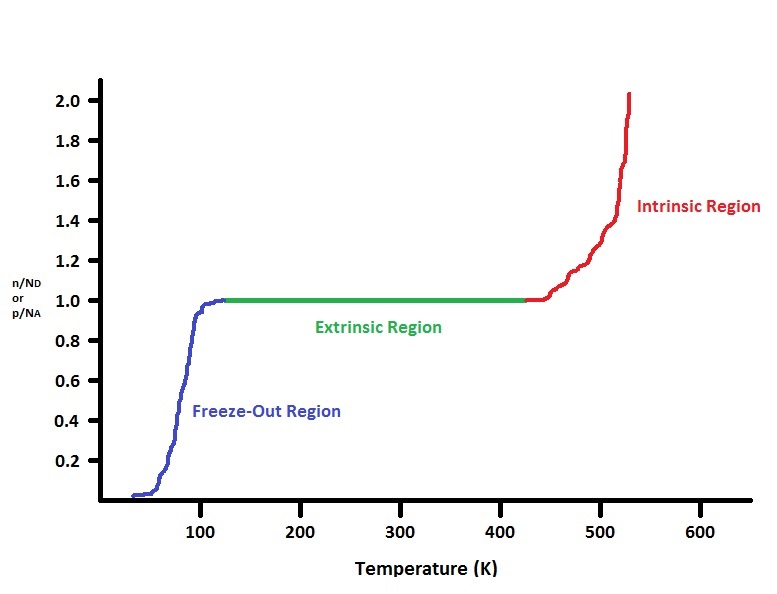We already know that the addition of a small amount of donor or acceptor impurity produces a large number of charge carriers in an extrinsic semiconductor. In fact, this number is so large that the conductivity of an extrinsic semiconductor is many times that of an intrinsic semiconductor at room temperature.
If the temperature of an N type semiconductor is increased, then since all the donor atoms have already donated their free electrons at room temperature, the additional thermal energy only serves to increase the number of thermally generated carriers.
As a result, the concentration of minority carriers increases. Finally, a temperature is reached when the covalent bonds that are broken is very large so that the number of holes is approximately the same as the number of electrons. The situation with regard to P type semiconductor is also similar. Therefore, the extrinsic semiconductor now behaves essentially like an intinsic semiconductor with higher electrical conductivity. This critical temperature is 850C for germanium and 2000C for silicon and above which it may damage.
Thus, the electrical conductivity of extrinsic semiconductors increases with rise in temperature and such semiconductors have the negative temperature coefficient of resistance.

